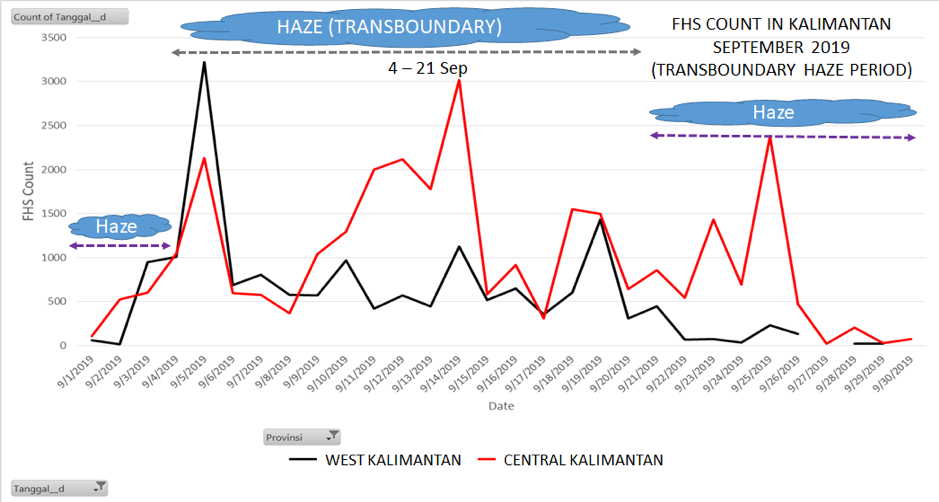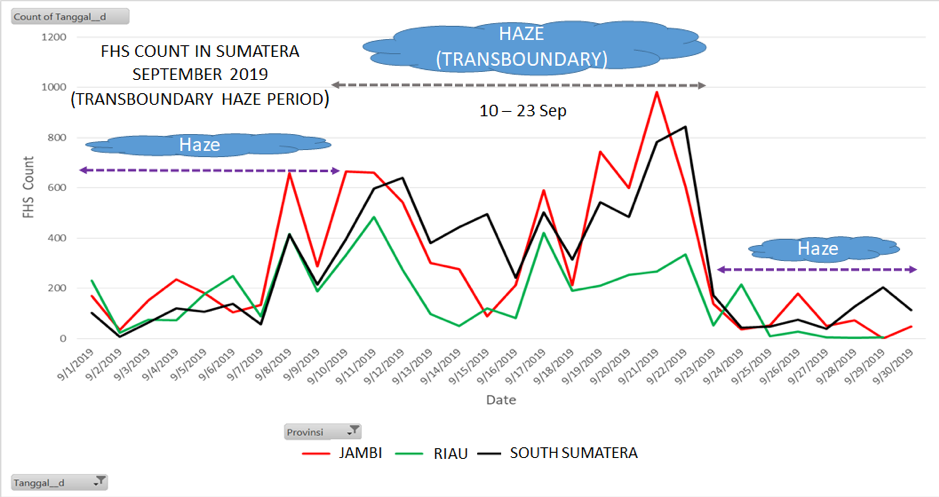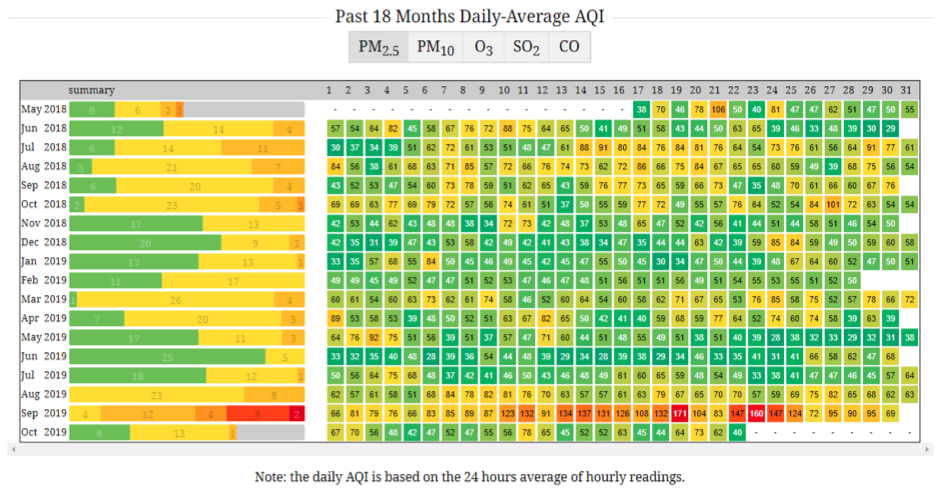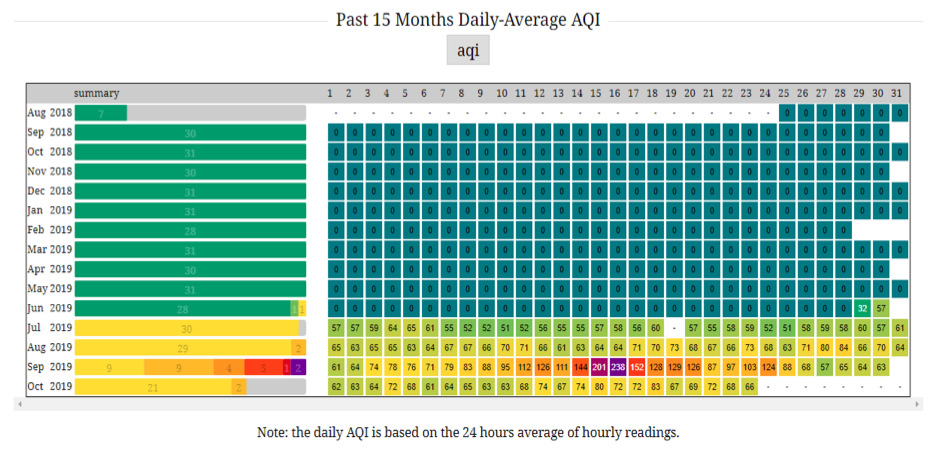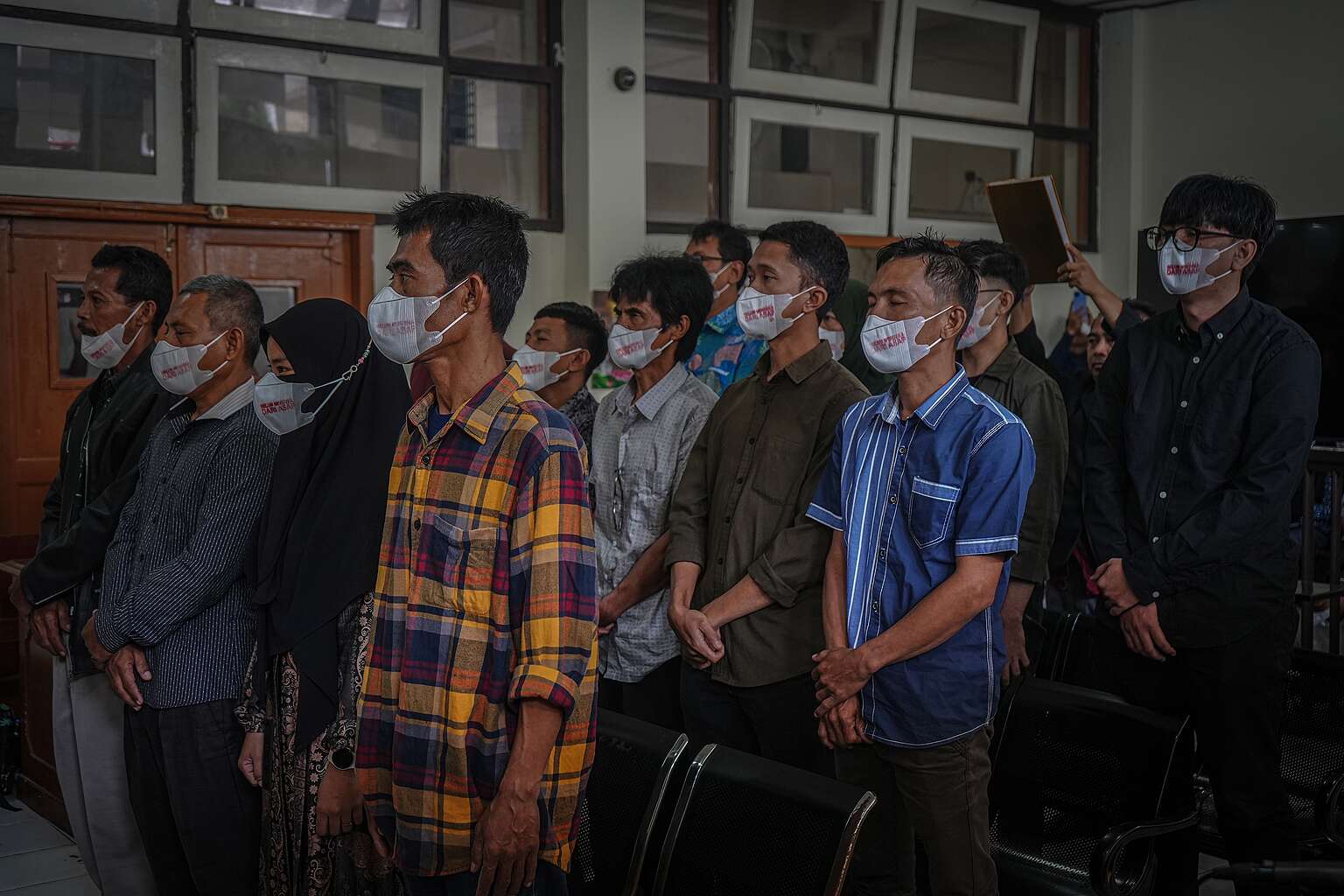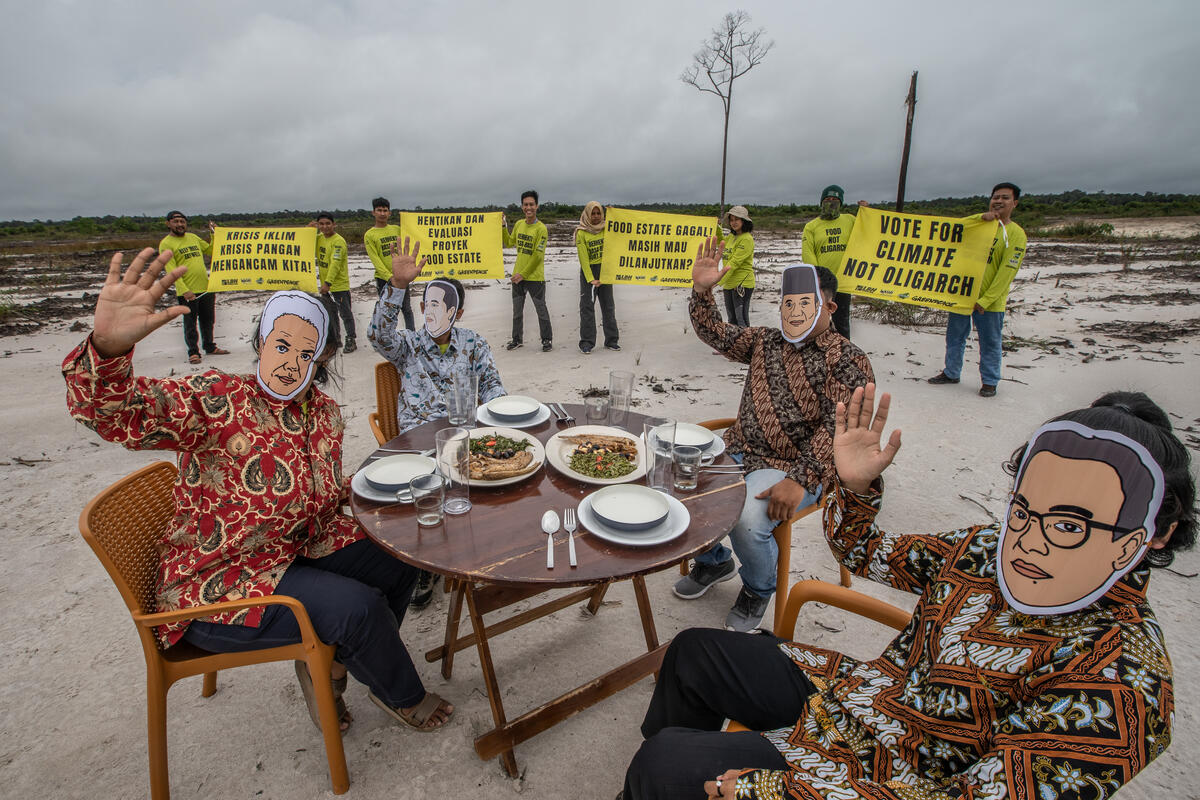Key points:
- Indonesia saw massive forest fires and haze during the period July – October 2019.
- A key driver of the fires is clearing and draining of forest and peatland for industrial plantations.
- Transboundary haze from these fires, particularly from sources in in Sumatra and Kalimantan reached Singapore and Malaysia during September 2019, noticeably worsening measured air quality.
- Many fires were burning in (and adjacent to) oil palm and pulp and paper plantations.[1]
- Some of the plantation companies that had fires on their land are linked to Singapore and Malaysia groups
- Groups with links to Malaysia which had fires on their land include IOI, Genting, and KLK. Those linked to Singapore include Bumitama and Musim Mas.
Background
Indonesia’s rainforests and peatlands are naturally fireproof because of the damp microclimate they maintain throughout the year; widespread fires are virtually unheard of where they dominate Indonesia’s landscape.[2],[3] Traditional subsistence-scale forest uses create temporary disturbance over limited areas, from which the forest is able to recover, leaving the overall landscape fire-proof even during drier El Niño events.[4]
In recent decades, however, these stable human-modified ecological systems have been logged and subjected to clearance and drainage for conversion into industrial plantations on a massive scale. Since the 1997 Indonesian forest fires disaster, uncontrollable forest and peatland fires have become recognised as a recurring problem arising from areas where vast oil palm and pulpwood plantations have sprung up.
Fires vary in severity from year to year in step with periods when the southern ASEAN region experiences especially dry spells.[5] The impacts of the fires are not limited to the severe damage they do on the ground in Indonesia. During the fires season, which occurs mainly during the dry season from July-October, prevailing winds often carry a thick smoke haze from Sumatra and Indonesian Borneo towards Singapore, Malaysia and to a lesser extent, Southern Thailand and on rare occasions even further afield to Indonesia’s other ASEAN neighbors.
Pollution from Indonesia’s 2015 fire and haze crisis was estimated by modelling carried out by researchers from Harvard and Columbia universities to have caused more than 100,000 premature deaths across Indonesia, Malaysia and Singapore.[6]
The pan-ASEAN haze crisis of 1997 and further haze episodes due to recurring Indonesian fires over following years spurred affected nations to create the ASEAN Agreement on Transboundary Haze Pollution (AATHP). The Agreement was signed by all the ASEAN member states in June 2002, and while ratification by all signatory states took a further decade, the agreement nevertheless entered into force in November 2003.
Singapore, which along with Malaysia is one of the two countries most severely affected by transboundary haze originating in Indonesia, has gone further than other signatories to the AATHP by raising the issue at the United Nations in 2006. Singapore has also passed into force its own enabling legislation in 2014: the Singapore Transboundary Haze Pollution Act (THPA), that criminalises conduct which causes or contributes to haze pollution in the country.
Recurring episodes of transboundary haze despite the adoption of the AATHP have put the spotlight on Jakarta’s failure to comply with the treaty. In 2016, ASEAN Member State Ministers responsible for environment, land, forest fires and haze reviewed the implementation of the AATHP. They issued a statement in which they “reaffirmed their commitment through concerted national efforts and regional cooperation to effectively implement the AATHP […] to achieve a Haze-Free ASEAN by 2020.”[7] Yet with 2020 just months away, the AATHP has failed to achieve that goal.[8]
One problem with enforcing the AATHP stems from ‘the ASEAN way’ of doing things which requires a consensus-based approach, and upholds the principle of non-interference in internal affairs of member states.[9] In practice this means politeness, non-confrontational approaches, behind-closed-door discussions, and informal and non-legalistic procedures. The AATHP itself does not even mandate Indonesia to accept international offers of fire-fighting assistance during transboundary haze crises,[10] much to the frustration of Singapore and Malaysian leaders.[11]
As Greenpeace Indonesia reveals below, many of the companies associated with fires in Indonesia have links to either Singapore or Malaysia. Yet despite Singapore’s much vaunted Transboundary Haze Pollution Act, its government has taken no serious action to ensure that producers, traders or consumer brands based in Singapore or their Singapore-based owners are properly sanctioned for their contribution to the fires. In September 2019 a National Environment Agency spokesman said the Government of Singapore “has sent a diplomatic note to Indonesia, expressing concerns” about the fires and haze, but made no reference to taking other action.[12] Indonesia has also declined to assist Singapore in its efforts to apply sanctions, not disclosing information with regards to concession maps and boundaries which would enable Singapore authorities to determine which companies are responsible for fires and transboundary haze.
Malaysia’s response to action over the root causes of the fires has been even more muted; indeed, the country’s Primary Industries Minister Teresa Kok has expressed concern about the Indonesian government sealing Malaysian-owned concessions: ‘[The] named Malaysian companies are among the most respected oil palm cultivators… I remain concerned that the current accusation will play right into the hands of the anti–palm oil campaigners.’[13] Furthermore, Malaysia’s Environment Minister, Yeo Bee Yin, has to date refused to resign her post despite claims of inaction and conflict of interest based in part on the Indonesian government naming her husband’s company, IOI Corporation, as one of the palm oil companies contributing to forest fires and haze.[14]
The 2019 Fires and Haze Crisis
Indonesia’s Environment and Forestry Ministry has stated that so far this year (up till the end of September) forest fires have burned 857,756 hectares of peat and mineral soil,[15] an area almost 12 times the size of Singapore. This year is shaping up as the worst for Indonesian forest fires and haze since the massive fires in 2015, which were in turn the worst since those of 1997.[16]
The full human impact in Indonesia is yet to be tallied this year, but already it is estimated that almost a million Indonesians have suffered from respiratory illness from haze caused by the fires.[17] Ordinary activities were curtailed as schools were forced to close, flights were disrupted, and more than 9,000 security and emergency workers were diverted to fight the fires.[18] Six Indonesian provinces declared states of emergency over the fires and haze: Riau, South Sumatra and Jambi on the island of Sumatra and West Kalimantan, South Kalimantan and Central Kalimantan in Indonesian Borneo.[19]
This year has also seen a return of transboundary haze. As discussed below and further set out in Appendix III, normally good air quality in Singapore and Malaysia worsened due to haze blown across from fires burning across the border in Indonesia. Singapore was hit by haze resulting in AQI readings over 150, which is deemed “Unhealthy” for everyone. Residents of Southern Peninsular Malaysia suffered from air quality worse than AQI 200, which is categorised as ‘Very Unhealthy’ and during which time active children and adults are advised to avoid all outdoor exertion.
Worst of all was the haze in Malaysian Borneo, where one air quality station recorded AQI readings over 350, which is well beyond the AQI 300 threshold categorised as ‘Hazardous’, a situation during which the AQI standard warns that everyone may experience serious health effects.
Research Findings: Haze-Producing Companies Linked to Malaysia and Singapore
Throughout the 2019 fire season, Greenpeace Indonesia researchers have been observing and analyzing the fires and haze over the region, using the methodology set out in Appendix III. Besides examining remote sensing data, some ground investigations were also conducted.[20]
Transboundary haze events were identified during 4–21 Sept 2019 in Central and West Kalimantan, where smoke crossed the border into Malaysia, particularly Sarawak; and 10-23 Sept 2019 in Riau, Jambi and South Sumatera, where smoke crossed over into Singapore and Peninsular Malaysia.[21] The diagram below from the ASEAN Specialised Meteorological Centre provides an example (from 18 Sept 2019) of fire hotspots, haze and wind direction during this period.
Above: ASMC Outlook and Review at 18 September 2019 (one of a series of maps at: http://asmc.asean.org/home/)
The tables below provide the results of this analysis. They list plantation companies with concessions in West Kalimantan, Central Kalimantan, South Sumatera, Riau and Jambi in which fire hotspots were found between 4–23 Sept 2019. The second column shows the company groups which these plantations belong to. Their connections with Malaysia and Singapore are also indicated: “Group Headquartered or Registered” means that the group has headquarters and/or is legally based in the country mentioned; and “Link via Shareholding, Financing or Loan” indicates that financing or loans have been provided by, or a substantial shareholding belongs to, Malaysian or Singapore entities or citizen.
| OIL PALM PLANTATIONS LINKED TO MALAYSIAN & SINGAPORE GROUPS in
WEST KALIMANTAN (TRANSBOUNDARY HAZE 4 – 21 SEP 2019) |
||||
| Company Name | Group Name | Group Headquartered or Registered | Fire Hotspots
4 – 21 Sep 2019 |
Link via Shareholding, Financing or Loan |
| PT Kayung Agro Lestari | Austindo Nusantara Jaya | 305 | Singapore | |
| PT Arrtu Energie Resources | Rajawali/Eagle High | 304 | Malaysia | |
| PT Damai Agro Sejahtera | Bumitama | Singapore | 197 | |
| PT Berkat Nabati Sejahtera | IOI | Malaysia | 143 | |
| PT Agrolestari Mandiri | Sinar Mas (GAR) | Singapore | 123 | |
| PT Sukses Karya Sawit | IOI | Malaysia | 118 | |
| PT Karya Makmur Langgeng | Bumitama | Singapore | 64 | |
| PT Usaha Agro Indonesia | Sampoerna Agro | Singapore | 59 | |
| PT Sumber Hasil Prima | Goodhope | Singapore | 57 | |
| PT Kalimantan Prima Agro Mandiri | IOI | Malaysia | 44 | |
| PT Ladang Sawit Mas | Bumitama | Singapore | 38 | |
| PT Limpah Sejahtera | Fangiono Family/First Resources[22] | Singapore | 36 | |
| PT Gunajaya Karya Gemilang | Bumitama | Singapore | 36 | |
| PT Karya Bakti Agro Sejahtera 3 | Bumitama | Singapore | 34 | |
| PT Bumi Sawit Sejahtera | IOI | Malaysia | 34 | |
| OIL PALM CONCESSION LINKED TO MALAYSIAN & SINGAPORE GROUPS in
CENTRAL KALIMANTAN (TRANSBOUNDARY HAZE 4 – 21 SEP 2019) |
||||
| Company Name | Group Name | Group Headquartered or Registered | Fire Hotspots
4 – 21 Sep 2019 |
Link via Shareholding, Financing or Loan |
| PT Globalindo Agung Lestari | Genting | Malaysia | 376 | |
| PT Gawi Bahandep Sawit Mekar | Rachmat/Triputra Agro Persada[23] | 220 | Singapore | |
| PT Menteng Jaya Sawit Perdana | Kuala Lumpur Kepong (KLK) | Malaysia | 71 | |
| PT United Agro Indonesia | Genting | Malaysia | 52 | |
| PT Mega Ika Khansa | Rachmat/Triputra Agro Persada | 44 | Singapore | |
| PT RIM Capitol | Goodhope | Singapore | 40 | |
| PT Susantri Permai | Genting | Malaysia | 33 | |
| PT Globalindo Alam Perkasa | Musim Mas | Singapore | 27 | |
| PT Citra Mitra Perkasa Utama | Felda/Felda Global Ventures Holding Berhad (FGV) | Malaysia | 25 | |
| PULP CONCESSION LINKED TO MALAYSIAN & SINGAPORE GROUPS in KALIMANTAN (TRANSBOUNDARY HAZE 4 – 21 SEP 2019) | ||||
| Company Name | Group Name | Group Headquartered or Registered | Fire Hotspots
4 – 21 Sep 2019 |
Link via Shareholding, Financing or Loan |
| PT Acacia Andalan Utama[24] | Sinar Mas (APP, suppliers and affiliates)[25] | 142 | Singapore | |
| PT Hutan Rindang Banua | Sinar Mas (APP, suppliers and affiliates) | 110 | Singapore | |
| PT Hutan Ketapang Industri[26] | Sampoerna Group | Singapore | 104 | |
| PT Adindo Hutani Lestari | APRIL affiliated (RGE) | 44 | Singapore | |
| PT Bumi Mekar Hijau | Sinar Mas (APP, suppliers and affiliates) | 34 | Singapore | |
| PT Itci Hutani Manunggal | APRIL (RGE) | Singapore | 21 | |
| PT Asia Tani Persada | Sinar Mas (APP, suppliers and affiliates) | 19 | Singapore | |
| PT Surya Hutani Jaya | Sinar Mas (APP, suppliers and affiliates) | 15 | Singapore | |
| OIL PALM CONCESSION LINKED TO MALAYSIAN & SINGAPORE GROUPS in SUMATRA
(TRANSBOUNDARY HAZE 10 – 23 SEP 2019) |
||||
| Company Name | Group Name | Group Headquartered or Registered | Fire Hotspots 10 – 23 Sep 2019 | Link via Shareholding, Financing or Loan |
| PT Jambi Agro Wijaya | Bakrie | 107 | Singapore | |
| PT Bumi Reksa Nusasejati | Sime Darby | Malaysia | 80 | |
| PT Gandaerah Hendana | S&G Biofuel – JV[27] | 69 | Singapore | |
| PT Bahari Gembira Ria (Plasma) | Sime Darby | Malaysia | 59 | |
| PT Eramitra Agro Lestari | Bakrie | 45 | Singapore | |
| PT Kresna Duta Agroindo | Sinar Mas (GAR) | Singapore | 40 | |
| PT Tania Selatan (Plasma) | Wilmar | Singapore | 35 | |
| PULP CONCESSION LINKED TO MALAYSIAN & SINGAPORE in SUMATRA
(TRANSBOUNDARY HAZE 10 – 23 SEP 2019) |
||||
| Company Name | Group Name | Group Headquartered or Registered | Fire Hotspots
10 – 23 Sep 2019 |
Link Via Shareholding, Financing Or Loan |
| PT Rimba Hutani Mas[28] | Sinar Mas (APP, suppliers and affiliates) | 387 | Singapore | |
| PT Sumatera Riang Lestari | APRIL affiliated (RGE) | 299 | Singapore | |
| PT Wira Karya Sakti | Sinar Mas (APP, suppliers and affiliates) | 266 | Singapore | |
| PT Bumi Mekar Hijau | Sinar Mas (APP, suppliers and affiliates) | 163 | Singapore | |
| PT Ruas Utama Jaya | Sinar Mas (APP, suppliers and affiliates) | 119 | Singapore | |
| PT Bukit Raya Pelalawan | APRIL affiliated (RGE) | 102 | Singapore | |
| PT Bumi Andalas Permai | Sinar Mas (APP, suppliers and affiliates) | 56 | Singapore | |
| PT Bumi Persada Permai[29] | Sinar Mas (APP, suppliers and affiliates) | 54 | Singapore | |
| PT Arara Abadi | Sinar Mas (APP, suppliers and affiliates) | 36 | Singapore | |
| PT Perkasa Baru | APRIL affiliated (RGE) | 22 | Singapore | |
| PT Bumi Persada Permai[30] | Sinar Mas (APP, suppliers and affiliates) | 20 | Singapore | |
| PT Tebo Multi Agro | Sinar Mas (APP, suppliers and affiliates) | 18 | Singapore | |
| PT Bina Duta Laksana | Sinar Mas (APP, suppliers and affiliates) | 15 | Singapore | |
Recommendations:
- To be able to implement AATHP and stop fires and transboundary haze from happening again, member states involved must work together to enforce laws and prosecute those responsible for fires, both at subsidiary and group levels
- All company concession maps should be published and information shared across all ASEAN member states to improve transparency and law enforcement on forest fires.
Appendices:
I. Methodology
Transboundary haze was identified from maps released by the ASEAN Specialised Meteorological Centre (ASMC).[31] The daily maps, which show where and when transboundary haze occurred, indicated the transboundary haze could be grouped into two periods:
- Affecting Malaysian Borneo from 4-21 September 2019
- Affecting Peninsular Malaysia and Singapore from 10-23 September 2019
After this step, fire hotspots within Indonesia in the same period were then selected/filtered and compared with ASMC haze maps. Based on this analysis, it was determined that fires causing the transboundary haze were mainly located in Central Kalimantan, West Kalimantan, Riau, Jambi and South Sumatra. We filtered fire hotspots (FHS)[32] by transboundary haze period, then identified FHS inside oil palm and pulp plantation concessions with links to Singapore and Malaysia.
Company concession data is compiled from a variety of public sources by Greenpeace Indonesia because it has not been made available by the Government (Palm oil and pulp companies with most burned land go unpunished as Indonesian forest fires rage).[33],[34]
Plantation concessions were considered to be linked to Malaysia or Singapore if the group which owned them had headquarters and/or was legally based in the country mentioned; or if financing or loans had been provided by, or a substantial shareholding belonged to, Malaysian or Singapore entities or citizens.
Air Quality data was collected from from AQICN[35] and from Malaysia (Air Pollutant Index Of Malaysia/APIMS)[36] and Singapore government agencies (National Environment Agency/NEA).[37]
II. Greenpeace Indonesia Analysis of LAPAN Fire Hotspot Count and Haze Occurrence
The two graphs below, created by Greenpeace from data provided by Indonesia’s National Institute of Aeronautics and Space (LAPAN) show fire hotspot counts for each day of September, in two provinces of Kalimantan and three of Sumatra respectively. The periods during which haze impacted Indonesia are marked, along with the period during which transboundary haze impacted neighboring countries. FHS data can be accessed at http://modis-catalog.lapan.go.id/monitoring/
III. Relationship between Transboundary Haze and Air Quality Index at Locations in Malaysia and Singapore
Based on data from online site ‘The World Air Quality Index’,[38] the three locations in Malaysia and Singapore discussed below have ‘Good’ to ‘Moderate’ PM2.5-based daily-average Air Quality Index (AQI) readings during most of the year. The exception is during the transboundary haze period, when haze from Indonesian fires blew across and impacted air quality.
South Singapore had 14 days with AQI readings over 100, which is considered “Unhealthy for Sensitive Groups”. Of those 14 days, 2 days had AQI readings over 150, which is deemed “Unhealthy” for everyone.
Southern Peninsular Malaysia (Johor – Tangkak) experienced 12 days with AQI readings over 100. Of those 12 days, 3 days had AQI readings over 150, including 2 over AQI 200, which is categorised as ‘Very Unhealthy’ and during which time active children and adults are advised to avoid all outdoor exertion.
The air quality in Malaysian Borneo (Sarawak – Sri Aman) was particularly poor. 18 days of AQI readings over 100 were recorded. Of those 18 days, 5 days had ‘Very Unhealthy’ AQI readings over 200, and 2 days had AQI readings over 350, which is well beyond the AQI 300 threshold categorised as ‘Hazardous’, a situation during which the standard estimates that everyone may experience serious health effects.[39]
Southern Singapore
Peninsular Malaysia
Malaysian Borneo
This AQI station in Malaysian Borneo registered worsened air quality during 6–24 Sept 2019, corresponding to the period from 4–21 Sept when transboundary haze was being generated in adjacent Indonesian Borneo.
IV. List of Groups Linked to Malaysia and Singapore
https://docs.google.com/spreadsheets/d/12Dv6BH-5PgTidkRZRBNy6RntcYmiJ32R3foOysZX96A/edit?usp=sharing
V. Presentation Of Transboundary Haze Analysis
https://drive.google.com/file/d/1vm7SnCWeAkeTAKxlFPZYgbGLPl4Fk5oT/view?usp=sharing
[1] Fire In Indonesia 4 -23 September 2019 – GFW Fires analysis ttps://fires.globalforestwatch.org/report/index.html#aoitype=GLOBAL&reporttype=globalcountryreport&country=Indonesia&dates=fYear-2019!fMonth-9!fDay-4!tYear-2019!tMonth-9!tDay-23
[2] http://www.worldagroforestry.org/publication/fire-and-land-use-effects-biodiversity-southern-sumatran-wetlands
[3] Global Forestwatch recorded zero percent fire alerts during 2019 in areas categorised as “Intact Forest Landscapes”. See https://fires.globalforestwatch.org/report/index.html#aoitype=GLOBAL&reporttype=globalcountryreport&country=Indonesia&dates=fYear-2019!fMonth-9!fDay-4!tYear-2019!tMonth-9!tDay-23
[4] https://news.mongabay.com/2009/02/new-fire-record-for-borneo-sumatra-shows-dramatic-increase-in-rainforest-destruction/
[5] Such as this year as noted by the ASEAN Specialised Meteorological Centre: http://asmc.asean.org/subseasonal-weather-outlook-1-15-july-2019/
[6]https://www.nst.com.my/news/2016/09/174356/study-estimates-100000-premature-deaths-indonesia-haze
[7] Point 14 from the 15th ASEAN Ministerial Meeting on the Environment and the 15th Meeting of the Conference of the Parties to the ASEAN Agreement on Transboundary Haze Pollution. https://asean.org/15th-asean-ministerial-meeting-environment-15th-meeting-conference-parties-asean-agreement-transboundary-haze-pollution/
[8] https://www.thejakartapost.com/seasia/2019/10/14/aichr-representatives-call-for-implementation-of-haze-treaty.html
[9] Embodied in the ‘Bangkok Declaration’ of August 1967. https://asean.org/the-asean-declaration-bangkok-declaration-bangkok-8-august-1967/
[10]Article 12 (2) states that “ Assistance can only be employed at the request of and with the consent of the requesting Party, or, when offered by another Party or Parties, with the consent of the receiving Party.
[11]https://www.msn.com/en-sg/news/world/dr-m-“i-dont-know-why-indonesia-is-not-accepting-our-help”/ar-AAHHf77
[12] Today Online (2019) ‘Singapore sends diplomatic note to Indonesia over forest fires’ 28 September 2019 New Straits Times https://www.nst.com.my/world/2019/09/525372/singapore-sends-diplomatic-note-indonesia-over-forest-fires
[13] Povera A (2019) ‘Haze: Kok raises concern over Indonesia’s action against 4 Malaysian companies’ 13 September 2019 New Straits Times https://www.nst.com.my/news/nation/2019/09/521216/haze-kok-raises-concern-over-indonesias-action-against-4-malaysian
[14] See Straits Times (2019) ‘Malaysia’s environment minister ignores calls to resign’ 26 September 2019 https://www.straitstimes.com/asia/se-asia/malaysias-environment-minister-ignores-calls-to-resign and Channel News Asia (2019) ‘Malaysian environment minister brushes off calls for resignation amid alleged conflict of interest in handling haze issue’ 25 September 2019 https://www.channelnewsasia.com/news/asia/malaysia-yeo-bee-yin-haze-resign-conflict-of-interest-11940298.
[15] https://ppid.menlhk.go.id/siaran_pers/browse/2151 and https://bnpb.go.id/luas-lahan-terbakar-seluruh-indonesia-capai-857-ribu-ha
[16] https://www.washingtonpost.com/business/energy/why-its-another-bad-year-for-indonesia-forest-fires/2019/09/19/9001f12a-daaf-11e9-a1a5-162b8a9c9ca2_story.html, https://earthobservatory.nasa.gov/features/IndonesianFires
[17] https://nasional.kompas.com/read/2019/09/23/17522721/hampir-satu-juta-orang-menderita-ispa-akibat-kebakaran-hutan-dan-lahan
[18] https://www.straitstimes.com/asia/se-asia/respiratory-illness-spikes-travel-affected-as-haze-hits-southeast-asia
[19] https://www.nst.com.my/world/2019/08/508945/indonesia-declares-emergency-forest-fires-rage-sumatra-kalimantan
[20]See images at https://media.greenpeace.org/CS.aspx?VP3=SearchResult&ALID=27MZIFJ8MTZF0
[21]https://www.kominfo.go.id/content/detail/21452/disinformasi-kabut-asap-karhutla-indonesia-sampai-ke-malaysia/0/laporan_isu_hoaks, http://www.bmkg.go.id/berita/?p=tiidak-ada-sebaran-asap-karhutla-pada-tanggal-5-7-september-2019&lang=ID&tag=berita-utama, https://www.cnnindonesia.com/teknologi/20190913070928-199-430099/klhk-bantah-asap-karhutla-indonesia-cemari-udara-malaysia
[22] As laid out in Greenpeace International (2018), there is compelling evidence that First Resources, Ciliandry Angky Abadi, and Fangiono Agro Plantation companies should be treated as a single family group.
[23]The Rachmat group is an informal designation for the business empire of Indonesian tycoon Teddy Rachmat and his family. This includes the privately held Triputra Group, with interests in agribusiness, manufacturing and mining. The Triputra Group subsidiary PT Triputra Agro Persada is engaged in palm oil and rubber production and lists three subsidiaries on the RSPO website.
[24]Specifically: SK 87
[25]This list includes concession companies where research by NGO stakeholders identifies ownership or control, even though publicly the group has not acknowledged this. More details on corporate structure and ownership links can be found in Koalisi Anti Mafia Hutan et al (2018). ‘Removing the corporate mask: An assessment of the ownership and management structures of Asia Pulp & Paper’s declared wood suppliers in Indonesia’ 30 May 2018 http://auriga.or.id/wp-content/uploads/2018/05/Removing-the-corporate-mask.pdf
[26]Previously PT Kertas Basuki Rachmat. https://industri.kontan.co.id/news/sampoerna-agro-caplok-lahan-basuki-rachmat
[27]Samsung C&T Corporation jointly established S&G Biofuel Pte Ltd. with Indonesia’s Athena City Holdings, S&G Biofuel Pte Ltd is incorporated in Singapore.
[28]South Sumatra
[29]Specifically: SK 79
[30]Specifically: SK 688
[31]Analyzed from Regional haze situation map 1 Sept 2019 – 1 Oct 2019 http://asmc.asean.org/home/, http://asmc.asean.org/haze-review-of-land-fires-and-smoke-haze-situation-for-first-fortnight-of-september-2019/, and http://asmc.asean.org/haze-review-of-land-fires-and-smoke-haze-situation-for-second-fortnight-of-september-2019/
[32]LAPAN FHS MODIS & SNPP satellite data with all Confidence level http://modis-catalog.lapan.go.id/monitoring/
[33] https://www.greenpeace.org/southeastasia/press/3098/palm-oil-and-pulp-companies-with-most-burned-land-go-unpunished-as-indonesian-forest-fires-rage/
[34]Accurate company concession data is not readily available in Indonesia, and despite ongoing efforts by NGOs to press the government to release this data progress has been extremely limited. However, Greenpeace International and other NGOs have been able to compile ‘best available’ nationwide concession data from a variety of sources for industries including palm oil and pulp and paper. While all reasonable effort has been made to ensure that the concession data is accurate, because of the different data sources and lack of government and company transparency there may be some inaccuracies
[35] https://aqicn.org/map/asia/
[36] http://apims.doe.gov.my/public_v2/api_table.html
[37] https://www.haze.gov.sg/resources/1-hr-pm2.5-readings
[39]See an explanation of the AQI categories here: https://aqicn.org/scale/


